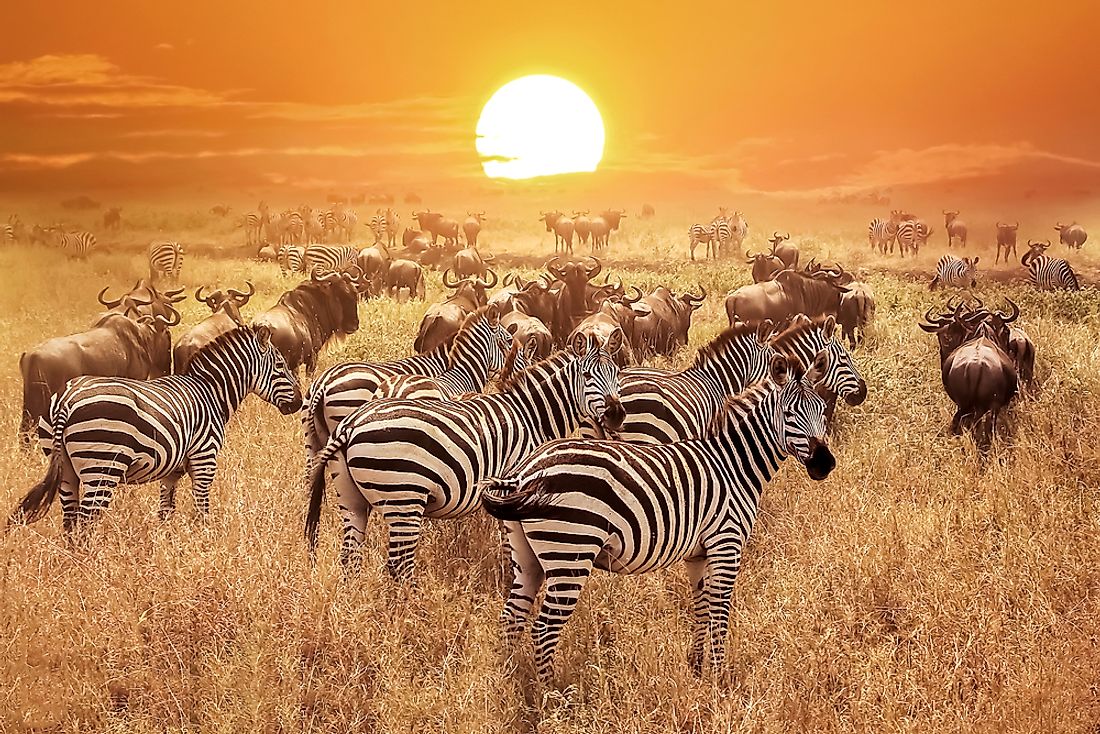10 Interesting Facts About The Serengeti

The Serengeti is an expansive ecosystem in East Africa. It covers over 12,000 square miles of Tanzania’s territory and is part of the contiguous Mara - Serengeti ecosystem that extends to southwestern Kenya. The Mara and Serengeti are separated by the international boundary demarcating Kenya and Tanzania, but both are located within the Mara region that has been settled by the Maasai community for the past 300 years. The name “Serengeti” means vast plains in the local Maa language. The Mara Serengeti ecosystem is among the most popular safari destinations in the world. The following are some interesting facts about the ecosystem.
- The Serengeti is among the most visited wildlife sanctuaries in the world. Every year more than 150,000 international and 100,000 local tourists visit the park. These numbers do not include those who visit the adjacent Maasai Mara reserve on the Kenyan side of the border.
- The Serengeti ecosystem is one of the largest and oldest in the world. The climatic patterns, flora, and fauna are among the most scientifically important on the planet. The habitat is believed to have remained unchanged over a million years. The success of the ecosystem is attributed to the Maasai community who have lived side by side with the animals and the environment.
- Besides being an important wildlife habitat, the Mara-Serengeti ecosystem and the adjacent plains are the ancestral home of the Maasai people of East Africa. They continue to inhabit the land and spearhead the conservation of the park. The Maa people have resisted the construction of modern facilities in the park citing urban pollution.
- The Serengeti is a haven for wildlife and plants. The park is inhabited by over 500 species of birds including the secretary bird and ostrich. There are over 2 million wildebeests, 300,000 gazelles, 200,000 zebras, and 100,000 buffaloes. The conservation efforts of the concerned governments have protected native trees from destruction.
- The Serengeti is home to the Ol Doinyo Lengai; the only active volcanic mountain in the region. The volcano ejects minerals and ash that fertilize the plains during the rainy season and give rise to new shoots that support the large numbers of herbivores.
- The central part of the Serengeti is littered with kopjes. These geologic wonders are made of exposed granite and gneiss shaped by temperature, wind, and rainfall over thousands of years. They are a popular resting place for lions for their sun-warmed rocks, vegetation cover, and raised altitude. The Simba Kopje was an inspiration for the Pride Rock in the film Lion King.
- The Serengeti is home to the largest wildlife migration in the world. The Great Migration is among the Seven Wonders of Africa and involves the movement of about 2.5 million wildebeest zebras, antelopes, and other grazers. Whenever the herbivorous go, lions other predators follow suit.
- Night drives are a perfect time to see predators in action, but park management does not allow night game drives to minimize noise and light pollution that interrupt lions and other predators that depend on silence and sight. The ban also minimizes deadly encounters between humans and animals.
- Wildlife in the Serengeti remains active throughout the year. Tourists experience the thrill of the Great Migration between June and July when wildlife migrate to the Maasai Mara side of the border. The drier months between November and March are the best time to experience the true wilderness of the Serengeti.
- In 2010, the Government of Tanzania announced plans to build an expressway through the park. The road was set to connect the cities of Arusha and Musoma, but conservation activists from across the world rallied against the action. The plan was shelved, but in 2017, the government announced that it was considering restoring the project.











